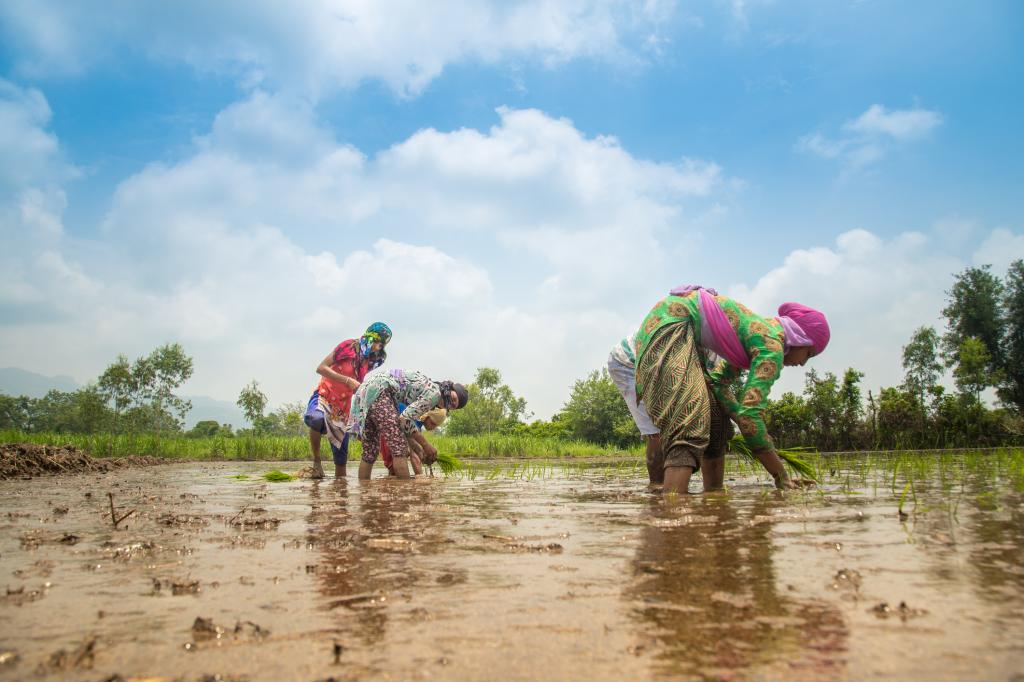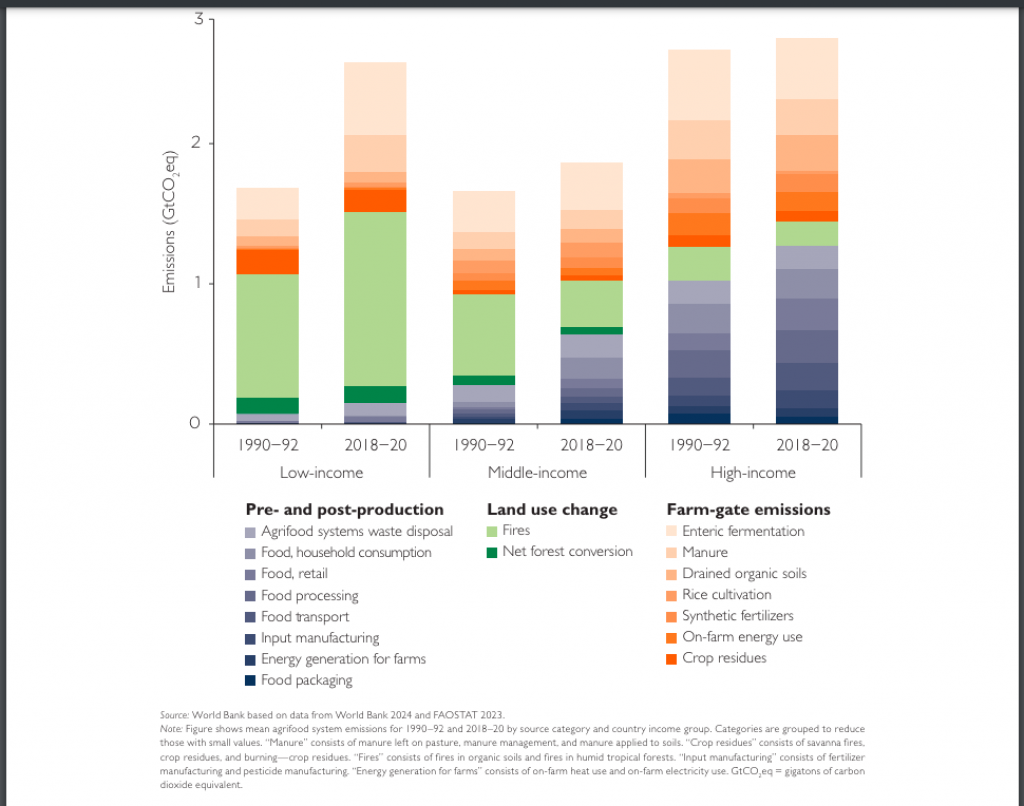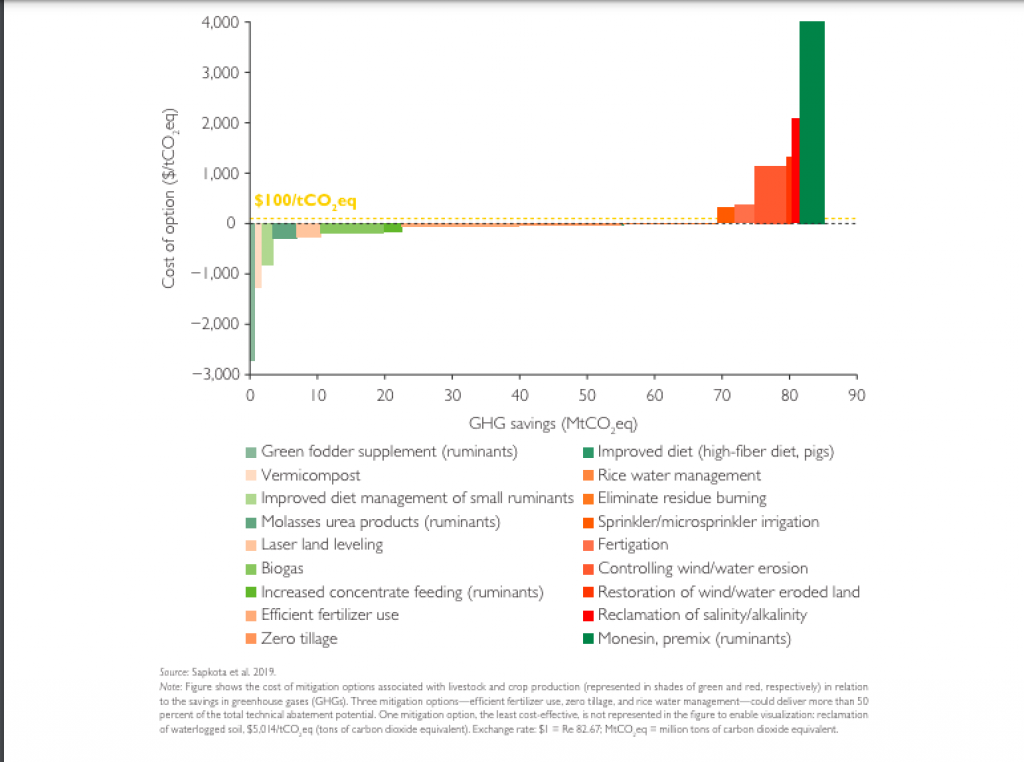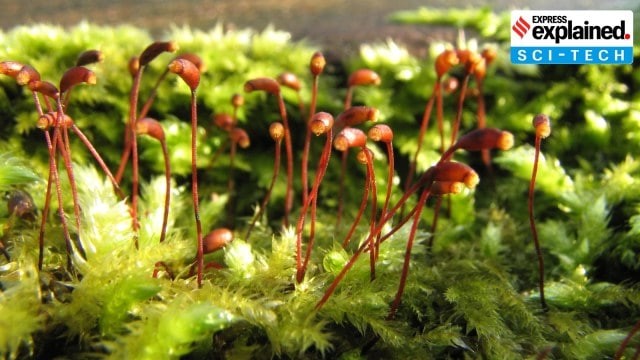Description

Disclaimer: Copyright infringement is not intended.
Context:
- World Bank Report titled "Recipe for a Livable Planet: Achieving Net Zero Emissions in the Agrifood System" outlines actions for countries to enhance food security, and climate resilience, and protect vulnerable populations during the transition to net-zero emissions.
Findings of the report
Impact of Solar Pump Adoption in India:
- Replacing a quarter of India’s 8.8 million diesel irrigation pumps with solar pumps could lead to a reduction in agrifood emissions by 11.5 million tonnes annually.
- This reduction surpasses the combined global emissions prevented by electric vehicles and solar panels in 2020, as per a new World Bank report on agrifood system emissions reduction.
Global Agrifood Emissions:
- The world’s agrifood system emits about 16 gigatonnes of greenhouse gases annually, around one-third of global emissions, with projections indicating further growth.
India's Emission Profile:
- In India, 60% of agrifood emissions originate from the farm gate, with enteric fermentation being a major contributor due to livestock inefficiency.
- Despite low emission intensity in rice production, India's global rank as the second-largest rice producer contributes considerable emissions (4%).
Renewable Energy Adoption in India:
- India has already deployed over 272,000 solar-powered irrigation systems by December 2020, indicating the potential for significant emissions reduction in the agri-food sector.
- The report suggests that 80% of agrifood emission mitigation potential in India could be achieved through cost-saving measures.
Top Agrifood Emitters:
- The top ten agrifood emitters include China, Brazil, India, the United States, Indonesia, the Democratic Republic of Congo, the Russian Federation, Canada, Pakistan, and Argentina.
- Of these, two (Canada and US) are high-income countries (HIC), one (Democratic Republic of Congo) is low-income country (LIC) and the rest are middle-income countries.

Per Capita Emissions:
- While populous countries like China and India rank high in total emissions, their per capita emissions are relatively lower compared to high-income countries.
- HICs exhibit the highest per capita emissions due to resource-intensive development models, with the US being a significant historical emitter.

Way ahead:
- The report emphasizes the significant role of the agrifood system in climate change and its potential for low-cost emissions reduction. Investments are crucial to halve agrifood emissions and meet Net Zero goals. Annual investments will need to increase to $260 billion a year to cut in half agrifood emissions by 2030 and reach Net Zero emissions by 2050.
- Investments in emissions reduction would yield over $4 trillion in benefits, including improved human health, food security, job creation, and carbon retention in forests and soils.
- The report emphasizes the need to redirect agricultural subsidies towards emissions reduction initiatives and increase financing for Net Zero targets.
- High-income countries can support low- and middle-income countries to adopt low-emission farming methods and technologies and shift subsidies away from high-emission food sources.
- Middle-income countries have a crucial role in reducing emissions through greener practices like livestock and rice emission reduction, soil health improvement, and efficient land use.
- Low-income countries can pursue climate-smart opportunities for greener economies, including forest preservation and restoration to mitigate agrifood emissions.
- Preserving and restoring forests would promote sustainable economic development in low-income countries, given that more than half of their agrifood emissions come from clearing forests to produce food.
Source:
https://www.downtoearth.org.in/news/agriculture/annual-investments-of-260-billion-required-to-halve-agrifood-emissions-by-2030-achieve-net-zero-by-2050-world-bank-96003
|
PRACTICE QUESTION
Q. "Analyze India's emission profile in the agrifood system, highlighting the major sources of emissions and the country's efforts in renewable energy adoption."( 250 words)
|














